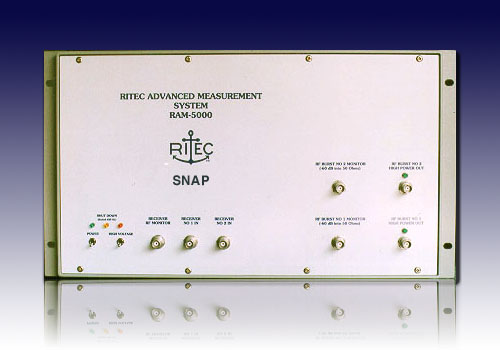|
|
|
|
|
RAM-5000 SNAP system for the Study of Nonlinear Acoustic
Phenomena with the nonlinear generation of sum and difference frequencies of changes in ultrasonic velocity and attenuation |
|
In the last few years, considerable attention has been focused on using nonlinear ultrasonic properties for the nondestructive evaluation of materials. Some examples of important applications include: metal fatigue, micro cracking, bond strength of adhesives, metal embrittlement, and properties of coatings. The RITEC SNAP incorporates a number of unique circuits designed to facilitate the determination of these properties using a variety of techniques: |
|
1. Harmonic generation in the sample can be monitored as a function of the driving sound amplitude. 2. Acoustic resonances may be examined at high and low amplitudes. 3. Beam mixing at two driving frequencies can be studied using two high-power, gated amplifiers. 4. In some cases simple amplitude dependence may used to obtain valuable results. |
|
Gated-amplifier, high-power outputs are
obtainable over a frequency range far in excess of one decade. Typical high-power (5KW) frequency ranges are 0.05 to 5 MHz and 0.5 to 7 MHz. At 1KW these ranges are extended to ~5 and just under 20 MHz respectively. In the SNAP system, however, the superheterodyne receiver may be independently tuned up to 80 MHz without loss of phase coherency. |

